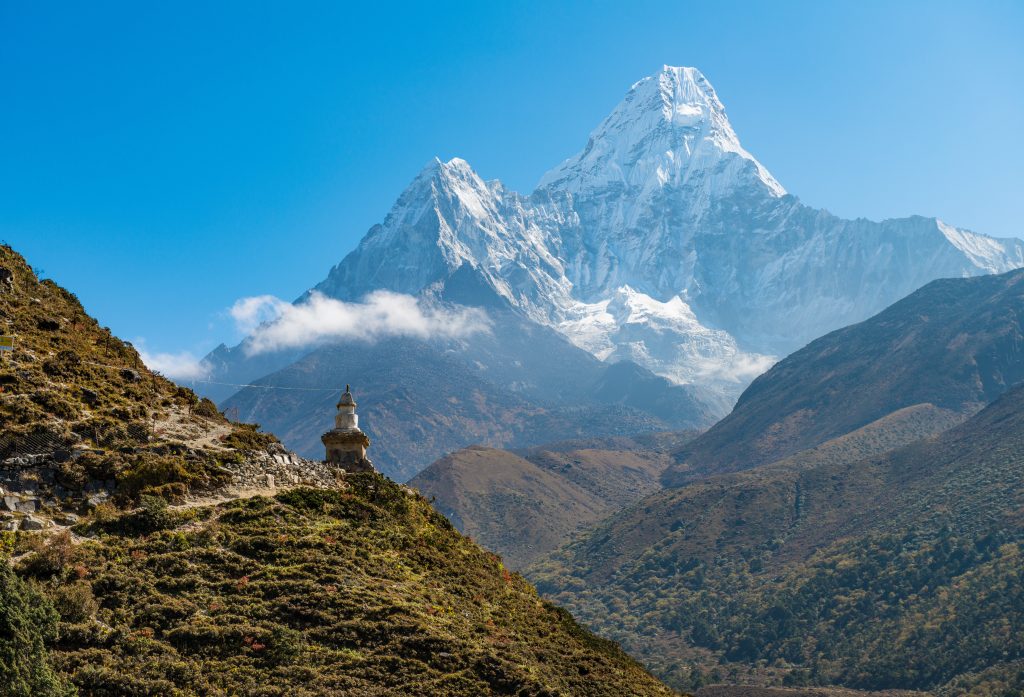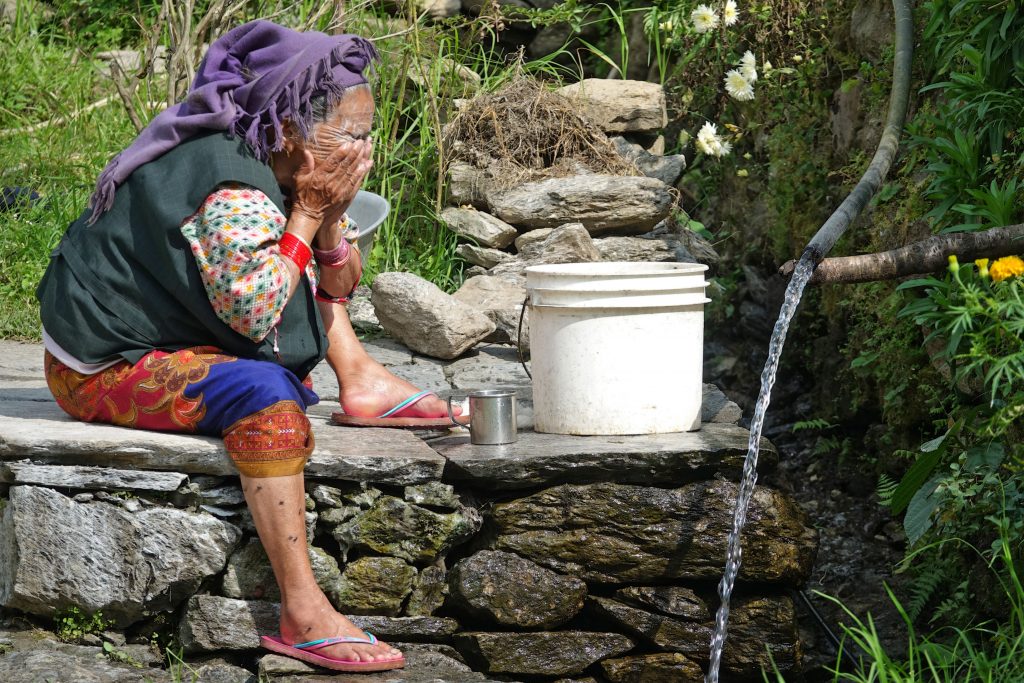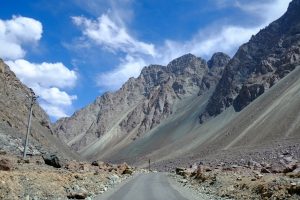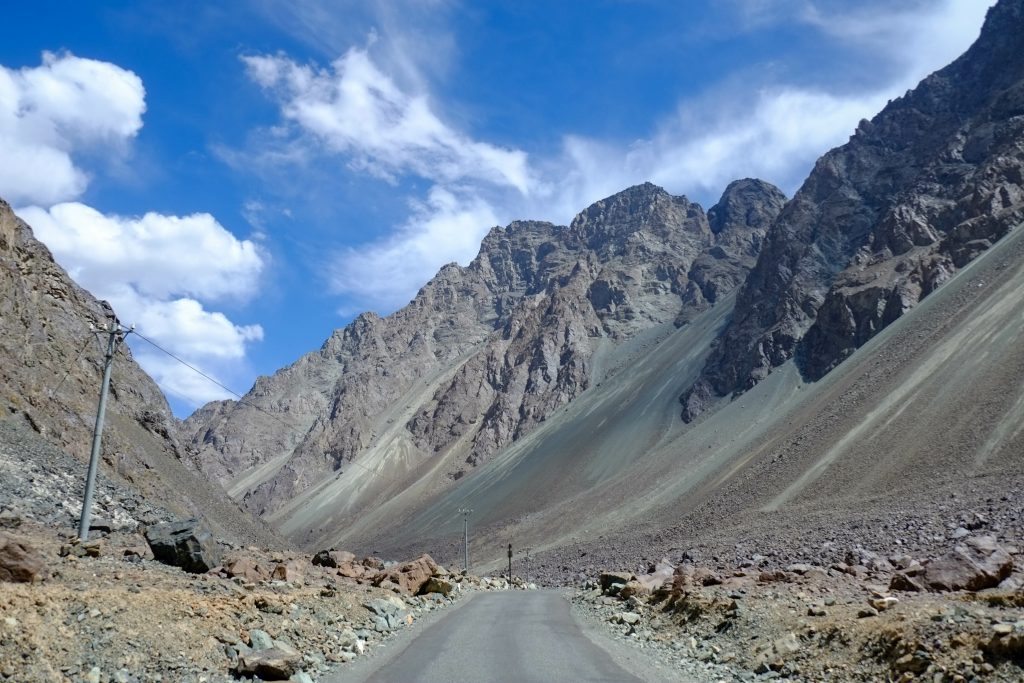The territory of modern Nepal has been inhabited by humans for around 30,000 years
The territory of modern Nepal has been inhabited by humans for around 30,000 years and the country’s ethnic diversity today reflects this long and rich history, which is deeply entwined with that of its southeast Asian neighbours.
In the first millennium BCE, a local prince renounced his wealth and status for a life of asceticism. He is now known as Gautama, the Buddha, and Nepal in subsequent centuries became renowned as a place of spiritual refuge.
In mediaeval times, the Kirat dynasty came to dominate the east of the country, and the Khas the west, with their language becoming the lingua franca in use today: Nepalese.
Although the country prizes its cultural and environmental diversity, a dependence on agriculture and natural resources has put especial pressure on forests and those who live in such areas. So robust measures have been introduced to mount a defence. Chief among them, the Community Forest Programme, which has successfully reversed land clearances and seen forest territory grow by 5% in recent years. It has made Nepal a forerunner in community-based forest management.

Early history

Early history
Warring Dynasties – Tibet dissolves into rival monarchies and Nepal’s history is marked by uprisings and conflict between dynasties.
Unification – Prithvi Narayan Shah, a Gorka king, conquers Kathmandu in 1769 and puts into motion a plan for a unified kingdom.
Conflict with Britain – Disputes about trading rights with bordering Indian states led to the Anglo-Nepali war in which Gurkha warriors distinguished themselves by their fighting prowess. The conflict concluded with a treaty establishing the country’s borders.
Sovereignty – the 1923 Treaty of Friendship with Britain establishes Nepal’s right, as an independent nation, to conduct foreign policy as it sees fit

Late 20th century

Late 20th century
Official suppression – In the latter part of the 20th century, Nepal’s rulers deny the existence of cultural differences between indigenous groups.
1978 – In an important precedent, the Panchayat Forest and Panchayat-protected Forest Rules allow local governments the right to oversee and manage forest areas.
1989 – The Master Plan for the Forestry Sector is drawn up, establishing one of the key policy documents for promoting community forestry in Nepal.
1990– During this period and the beginning of the 21century started the discussions concerning Indigenous Peoples. This was particularly encouraged by the Janjatis group.
1991– The Nepal Federation of Indigenous Nationalities creates a single umbrella organisation for all indigenous groups.
1993 – The Forest Act decentralises government further, allowing communities greater rights over the forests they depend on, including tenure of individual households over their lands.
1995 – the Forestry Regulations of 1995 which is composed of directives and guidelines for an effective implementation of the Act to ensure good forest governance in Nepal.

New constitutions

New constitutions
2007 – The right of Nepalese citizens to own and sell property is enshrined in law in 2007, ending the legacies of feudalism.
2015 – A revised constitution in 2015 provides for greater participation of indigenous nationalities in decisions affecting their communities.

Prehistory

Prehistory
30,000 BCE – Earliest archaeological evidence of human settlement.
4,000 BCE – The Tibeto-Burmese people had reached Nepal either directly across the Himalayas from Tibet or via Myanmar and north-east India or both.
500-400s BCE – Gautama Buddha and his followers establish the tenets of Buddhism in what is now southern Nepal.
500 to 700 – A powerful unified kingdom emerges in Tibet which includes present day Nepal. Historical sites suggest the presence of an ancient Hindu culture.

Early 20th century

Early 20th century
1955 – Nepal joins the United Nations, a prelude to the adoption of important international conventions.
1964 – The Land Act creates the basis for the regulation of land use and for community-based forestry initiatives.

Civil war

Civil war
Civil war – a decade-long Maoist insurgency ends in 2006, leading to the abolishment of the monarchy, but also to a Land Reform Commission.

International obligations

International obligations
2007 – In 2007, Nepal ratifies the International Labour Organisation’s Convention on Indigenous and Tribal Peoples and signs the UN Declaration on the Rights of Indigenous Peoples.
2009 – The Community Forestry Guidelines are drawn up with the active participation of previously marginalised communities.
2016 – A National Action Plan is formulated to protect the rights of indigenous nationalities in Nepal, and a Forest Sector Strategy aims to increase community-managed holdings to 40% of forest areas by 2025.
2017 – The Local Government Operations Act, which permits the local development of forest regulation, is endorsed across the political spectrum.